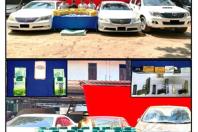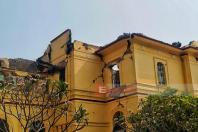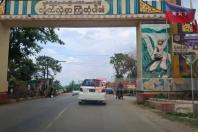"India-Myanmar relationship is based on its own merits and is underpinned by mutual respect and mutual interest."
- H.E Shri Saurabh Kumar
Q1. India had always maintained a friendly neighbour bilateral relationship with Myanmar. But under the current Prime Minister Narendra Modi, India is working toward closer ties with Myanmar as per the Prime Minister's Act East policy. What is the primary reason behind this?
Ans. India has been pursuing the Look East policy since early 1990s. To give this a greater dynamism and vigour, Prime Minister Modi renamed it as Act East policy. The nomenclature also reflects the growing importance of South East and East Asia for India. Myanmar, of course, enjoys a special position since it is at the intersection of two of India’s important foreign policy initiatives, viz., Act East and Neighbourhood First.
Q2. We would like to ask about perhaps the most important project between India and Myanmar, which is the Kaladan project. As India works towards Kaladan project and Sittwe port, China is also working on the Kyaukphyu Deep sea Port. The local opinion is that both projects are political in nature, on top of the obviously economical benefits. Can you provide us a summarized version of why the Kaladan Project is a critical project?
Ans. I am glad that you asked about the Kaladan Multi Modal Transit Transport Project, since some circles lack a good understanding of the project. The Kaladan project is a grant-in-aid project with a contribution of US$ 484 million from India. It provides for the development of the Sittwe port, an Inland Water Terminal at Paletwa on Kaladan river and road connectivity from Paletwa to Zorinpui on India-Myanmar border. The port would contribute to Rakhine State’s development, and this multi modal connectivity with India’s northeast would open avenues for trade with India’s Mizoram and other states. It would also give India’s northeast an additional outlet to the sea. It would, therefore, benefit local people, as well as, is in the larger interest of both India and Myanmar. The port is ready and should be operational in the first quarter of next year once its dredging and that of the waterway is completed and necessary licences are in place. Work on Paletwa-Zorinpui road is underway and is likely to take some more time. Once that is done, multi-modal connectivity to India’s northeast would also be established. It is important to note that Kaladan project is not a commercial project but is targeted towards development of infrastructure which would serve the local people, as well as, the two countries. As I said earlier, it is a grant-in-aid project.
Q3. While battles have stopped temporarily in Rakhine State, some are of the opinion that a nation was involved politically, while the general acceptance is that Arakan Army is demanding political recognition. What do you know about this and what is your Excellency's opinion on this?
Ans. The improvement of the situation in Rakhine State is a positive development. I do hope that the issues there would be resolved peacefully through dialogue. Economic growth and development is important for the Rakhine State and we are engaging with the government of Myanmar to contribute towards this. Sittwe port and Kaladan project in general would have a positive effect on the economy of Rakhine and Chin states. Also, we are contributing to the socio-economic development of the area through our Rakhine State and Border Area Development programmes under which US$ 25 million each have been pledged for Rakhine and Chin.
Q4. When talking about Rakhine State, we cannot neglect ARSA. India had conducted and released information regarding investigations into ARSA and its movements. Are there any information regarding ARSA that you can divulge to us?
Ans. ARSA has resorted to terrorist activities and remains a big challenge for all of us. I would not be at liberty to share any specific information on ARSA except for stating that the concerned agencies of the two countries are in close touch.
Q5. Currently, Japan is acting as an intermediary to stop the conflict in Rakhine State. We would like to hear your Excellency's analysis on this situation and what can occur in the future?
Ans. I understand that Japan played a positive role which led to both Tatmadaw and Arakan Army issuing statements on 12 November. Things have further progressed since then. Not only do we hope for a better situation on the ground which enables displaced persons to return but also for food and other supplies to be brought in. We know that channels of communication have been opened between Tatmadaw and Arakan Army and our hope is that these would produce positive sustainable results.
Q6. While not related to Rakhine but with ASEAN, the Regional Economic Comprehensive Partnership (RCEP) was signed by China by not by India. Can you explain the reasoning behind this decision?
Ans. Our decision not to join RCEP agreement was based on the assessment of our national interest. There were significant issues of core interests to us which remained unresolved. We participated in the discussions in good faith and kept our partners informed.
Q7. When we talk about bilateral relations, we also must include the relationship between the militaries of India and Myanmar. Information regarding cooperation from both militaries can be seen from just regional news to official news releases from the militaries. It can be said that the ties are even deeper now. India's Chief of Defence Staff has visited Myanmar a couple of times in recent years. There have been cooperation from Myanmar to honor India's request to capture cadres of Indian insurgent groups that were in Myanmar's territory and then handing them over to India. Myanmar's military recieved its first ever submarine from the Indian navy. The personnel that man the submarine were also trained in India. Can you please let us know the amount of cooperation that has been had between both the militaries?
Ans. As India-Myanmar relations have grown so has our cooperation in the area of defence which is an important component of our overall relationship. As you mentioned, we have had good high level exchanges. Chief of Army Staff and Chief of Naval Staff both visited Myanmar during 2020 while Senior General Min Aung Hlaing was in India in the middle of 2019. We have a good dialogue at different levels. India and Myanmar share both land and maritime borders and it becomes important for our armed forces to interact to prevent undesirable activities in the border regions. We are highly appreciative of Tatmadaw taking action against Indian insurgent groups’ cadres in India-Myanmar border areas. Our mutual understanding is not to let our respective territories be used by groups inimical to the other. I am happy to note that engagement in different areas, including training and capacity building has increased. The commissioning of UMS Minye Theinkhathu into Myanmar Navy on 24 December, of course, was a major milestone and reflective of our good cooperation.
Q8. Last but not least, India and China had definitely seen increased amount of tension recently. While not directly in the line of conflict, Myanmar will undoubtedly be the ground on which both great nations of India and China compete for respective national interests. Undoubtedly, your Excellency would have already known about the article that was sent to most media groups in Myanmar by the Global Times titled "India eager to drive a wedge between China, Myanmar". What is your opinion on this particular move?
Ans. Yes, the circulation of the said article to media groups in Myanmar was brought to my notice. I found it surprising, but rather not comment on it. Of course, Myanmar friends, journalists and people are smart enough to draw their own conclusions. All I would like to say is that India-Myanmar relationship is based on its own merits and is underpinned by mutual respect and mutual interest. The said article, of course, does not reflect the reality.
Kyaw Zaw Linn, Chief Editor & Policy Director of EMG











